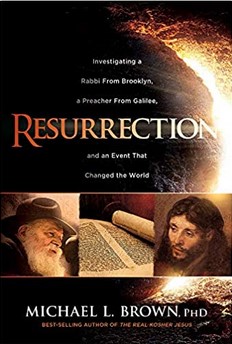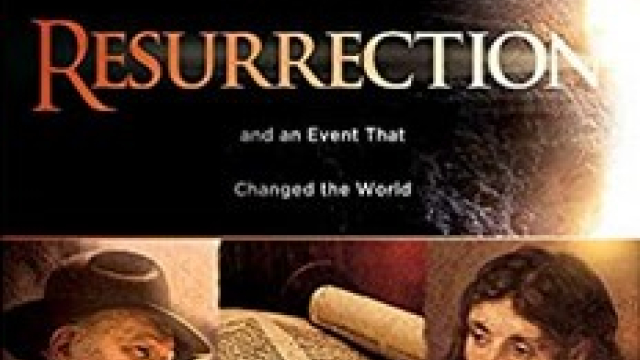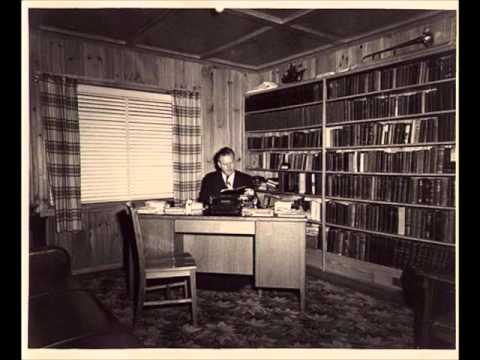Click to join the conversation with over 500,000 Pentecostal believers and scholars
Click to get our FREE MOBILE APP and stay connected
| PentecostalTheology.com



 Michael L. Brown, Resurrection: Investigating a Rabbi from Brooklyn, a Preacher from Galilee and an Event that Changed the World (Lake Mary, FL: Charisma House, 2020), 195 pages, ISBN 9781629996929.
Michael L. Brown, Resurrection: Investigating a Rabbi from Brooklyn, a Preacher from Galilee and an Event that Changed the World (Lake Mary, FL: Charisma House, 2020), 195 pages, ISBN 9781629996929.
As I read through Michael Brown’s book Resurrection, comparing the events surrounding the life and death of Rabbi Menachem Mendel Schneerson to the life and death of Jesus, Brown makes the case that even though these two individuals are both compelling figures in Judaism, one important event, the resurrection, distinguishes why one is considered to be the Jewish Messiah and the other is not. Jesus’ resurrection is what Brown calls the event that changed the world. As Brown points out, many of the followers of the Lubavitcher Rabbi, who they refer to as The Rebbe, expected him to resurrect after he died on June 12, 1994. When no resurrection occurred, many became dejected, and it divided the entire movement, and those divisions still exist today. Subsequently, his followers have come up with different reasons as to why his resurrection had not occurred, but this has left many questions unresolved such as, is the Rebbe still with us today and is he the promised Jewish Messiah of Israel? This book takes us deeper into the mysterious sect of the Lubavitch Movement, an Ultra-Orthodox Jewish sect, whose many adherents still claim today their beloved rabbi is the Jewish Messiah.
I can’t help but reflect on my own life, living in New York City, as I read through Brown’s timeline of the events surrounding the Rebbe’s death. For years before he died, there were huge billboards around New York City showing his face and blaring a fervent Messianic message “We Want Moschiach Now.” This group of devoted followers believed he was the best candidate to be the Jewish Messiah and they were waiting for him to declare himself to be the Messiah. Then the unexpected happened and he died. Right afterwards many clamored on the streets of 770 Eastern Parkway, his home awaiting him to be resurrected, but after three days their hope had turned to sorrow. Many of his followers claimed he could have been the Messiah, but the Jewish world was not quite ready to receive him, so he died for their pain and suffering and even attached the Suffering Servant motif from Isaiah 53 to their Rebbe’s death in the literature that was being circulated after his death.
As Brown writes in his book, even though they knew the Rebbe had not physically resurrected, many came to believe he never really died, and his presence is still with us today. When one visits the Rebbe’s place of worship at 770 Eastern Parkway in Brooklyn, NY, one may converse with his followers and see some rather fascinating ideas being promoted. One of the most fascinating is the idea the Rebbe is still with them today as he sits in a chair they have in the corner of the building where they worship even though you cannot see him.
From the Publisher: “What made Jesus the Messiah? This book will teach you the Jewish roots of your faith and help you gain a fresh new perspective on the resurrection of Jesus. In 1994, after one of the greatest rabbis of the twentieth century died at the age of ninety-two, his followers began to proclaim him as the Messiah. They expected him to rise from the dead and even come again. Is this possible? Could a deceased rabbi be the Messiah? In this fascinating book, biblical scholar Michael L. Brown, PhD, takes you on a captivating journey beginning in Brooklyn, New York, where this famous rabbi died in 1994, then back through Jewish history, looking at little-known Jewish beliefs about the Messiah, potential Messiahs that emerged in each generation, and teachings about the reincarnated soul of the Messiah. Dr. Brown then looks at the evidence for the resurrection of Jesus from his unique perspective as a Messianic Jew, demonstrating why Jesus’ resurrection uniquely confirms that He alone is the promised Messiah. This page-turner is for everyone who is interested in the Jewish roots of our faith, everyone fascinated by Jewish tradition, and everyone wanting to gain a fresh new perspective on the resurrection of Jesus the Messiah. It is also a great witnessing tool for Christians who want to share the good news of Yeshua the Messiah with their Jewish friends.”
Over the years many Messianic Jews have been told that a belief in a Messiah who dies, is resurrected and is divine is outside of Judaism. However, if one digs into the world of the Chabad movement, as Brown does in his book, these ideas are not so foreign to Orthodox Judaism and very much part of the fabric of their theology about the Messiah.
Lubavitch children every day pray to the Rebbe who they believe did not die, by chanting this phrase, Yechi Adonenu Mereinu v’Rabbeinu Melech HaMoshiach L’Olam Va’Ed, “May our Master and Teacher and Rabbi, King Messiah, Live Forever.” Reflecting on this phrase that is used again and again in publications about the Rebbe, Brown points out that in Judaism there are two ways to reflect upon someone’s life. You can refer to someone who is living and to one who has died. By referring to The Rebbe as SHLITA instead of as The Rebbe ZT’L, they are making the case that he never died. This might be overlooked by many, but by using SHLITA which means “may he live a good long life” instead of ZT’L, “In blessed memory”, they are telling everyone in Judaism of their belief that the Rebbe is still alive and not dead.
Brown states very directly in Chapter 5 that we have two leaders with two very different outcomes. Jesus died and was buried just like Rabbi Schneerson, but what sets Jesus apart is that he was resurrected on the third day and the Rebbe did not. There were no mass hallucinations as some want to suggest, as Jesus showed himself to hundreds after his death. The early disciples did not cling to a Messiah they could not see. They beheld him, they touched him and even grieved when he physically went up into heaven, waiting for Him to return at the proper time.
Then in Chapter 6, Brown takes us to the pinnacle event that Christianity stands, the death of Jesus and compares this to the Rebbe’s death. Jesus did what no one expected Him to do, as He came down to earth from heaven to die for our sins revealing himself as the true Messiah of Israel and the whole world and then was resurrected.
This idea may seem like something way outside of Judaism, but as Brown points out in Chapter 7, Orthodox Judaism does have a belief in what is called the merit and death of a righteous tzaddikim. A Tzadik, who is a Jewish holy man, may increase in his suffering as he is trying to rectify his generation and the generations to come. As Brown rightly concludes, this idea sounds like the Gospel, and it is! Now with this backdrop, Brown brings the words of Paul in Corinthians to light “…Messiah died for our sins according to the Scriptures, that He was buried, that He was raised from the dead on the third day, according to Scriptures, and that he appeared…”
Over the last two thousand years many in the Jewish community have tried to distance themselves from the idea of a Messiah who dies, by referencing Deuteronomy 13:2-6. This passage states that if a prophet comes to you and says, “let us follow and worship other gods,” this is a test from the Lord. Even though he may appear to be righteous, and it looks good, stay away. However, Jesus never tried to get the Jewish people to follow other gods. When Jesus refers to himself as God in the flesh is this a test from the Lord? The answer is no! The answer lies right in the Old Testament itself as Brown reveals the mysterious concept of the Divine Angel in Chapter 9. Brown points out that this Angel of the Lord is no ordinary angel as he speaks as God and does things only God can do. The rabbis have never really been able to figure out precisely who this angel is, as they get close but not close enough to call him God.
Finally, Brown wraps up his book by stating that the event that changed the world, the resurrection of Jesus, has changed the lives of millions and millions of people, both Jew and gentile. The Rebbe could never claim such miraculous testimonies as those who have come to follow Jesus these last two thousand years.
The Rebbe has changed the face of Judaism and today there is still much confusion over who this rabbi was and who he is today. There is no such confusion with the death, burial, and resurrection of Jesus. The event that changed the world is still being heralded by His followers and still changing the lives of people all over the world.
Reviewed by Mitch Forman
Preview: https://www.google.com/books/edition/Resurrection/nN7QDwAAQBAJ




Troy Day
not sure how this one got here Philip Williams hopefully not his own